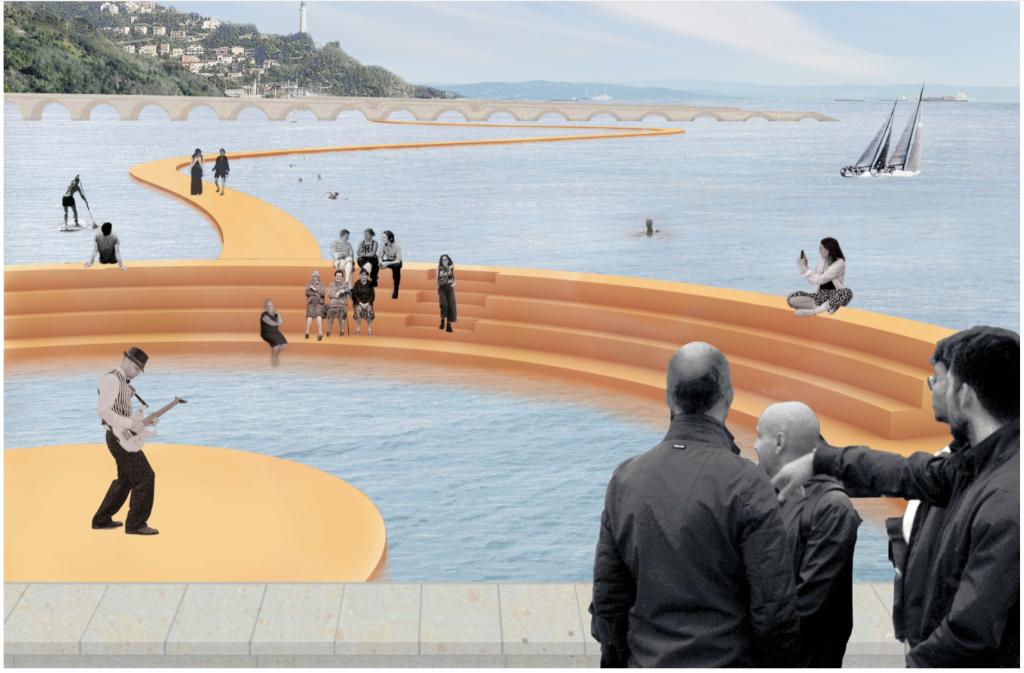
[AR2AA017] Urban Archipelago: Designing for new Maritime Mindsets
Course Description and Goal
Along European coasts and in port-city territories the relationship between sea and land is shifting. We need porous spaces and new concepts of public spaces to accommodate climate- change related spatial, social and cultural transformation. We need to provide new spatial approaches to live with water as well as provide climate justice for all. We need new public spaces that capture water-based lifestyles where newcomers, refugees and migrants encounter citizens, and where skilled employees cross the paths of service or knowledge workers.
We argue that architects and urban designers need to include water awareness and maritime mindsets into their local strategies to achieve:
- A balanced composition of the population, incl. regeneration of residential areas and places of short-stay;
- An environmentally sustainable sea-land development;
- Blue economic transition and sustainable development facilitating the broad chain of living with water ranging from transshipment to collaborative spaces of trade, exchange, and making.
You will develop scenarios that allow for an integration of sustain and prosperous marine and maritime practices into the complex reality of a hyperdiverse population living in an urban archipelago. This desires new narratives and mindsets and new approaches to temporalities which inform the design for future living with water.
Designing the urban archipelago calls upon architects, planners, anthropologists, economists, and historians to rethink together the logic of research and design through the lens of the sea-land continuum. The Urban Archipelago course will focus on the Adriatic Sea as a space of coexistence and conflicts. It will focus on Trieste, an emblematic coastal city that is part of the larger Adriatic system which includes cities on water such as Venice and Ravenna in Italy, or Koper in Slovenia and Pula in Croatia. You need to rethink the relationship between land and water, between public spaces, housing, infrastructure and (abandoned) industrial heritage, in Trieste today. Students will have to identify polarities and aggregative port-city phenomena within the network of public spaces, outdoors and indoors, within the urban fabric of Trieste. On these levels of scale, they develop new narratives informing new scenarios and maritime mindsets needed to reimagine Trieste within the Mediterranean as a water city, including living with water to better respond to the challenges posed by social, environmental, economic, and of course spatial transitions.
This syllabus has been prepared by Carola Hein, Maurice Harteveld, Paolo De Martino, and John Hanna - TU Delft 2023, except where otherwise noted this work is licensed under CC BY.
Group 1: FLUID ENCOUNTERS. Enhancing flows of life and water in Miramare, Trieste
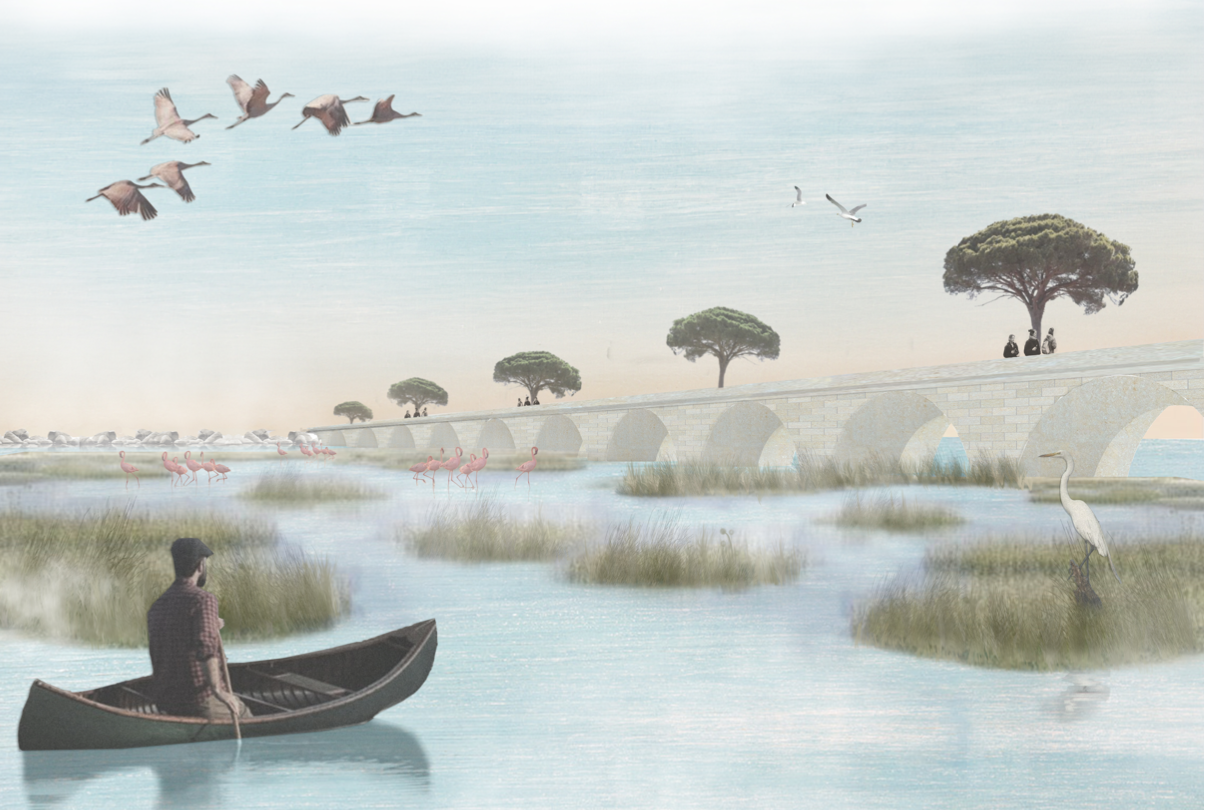
Marie Benninghoven, Ramona Buia, Jules Bresson, Lada Leidmane, Tim ter Heide
The project is built upon the personal experience of the Trieste and Miramare area. We look at a
large-scale network through human-scale encounters with water and exploring the local culture of living with water. We focused a lot on developing a system to examine and document places at both tangible and intangible levels. At the same time, we looked at the Miramare area on a regional scale and examined its network of connections.
Re-imagining future life with water inevitably involves thinking about changing weather conditions and the sea level rise. Therefore we developed the project in the context of a 1-2m sea level rise scenario. What is special about this area is that the largest part of it is not affected by the water rise due to the steep altitude change. However, if the water rises by 2m, the lifeline and the main public space located along the shore of the sea will be flooded.
Moreover, coming from our personal experience and the mapping exercises we discovered the lack of vertical connections in the area. Many staircases and paths coming from the top of the hill towards the sea are not continuous or became abandoned and forgotten over the years. Therefore, the objective of the design proposal was to revitalize and strengthen the vertical connections as well as give new space for leisure and cultural activities at the waterfront.
Group 2: Hydrotopia. Living in a dystopian Waterscape
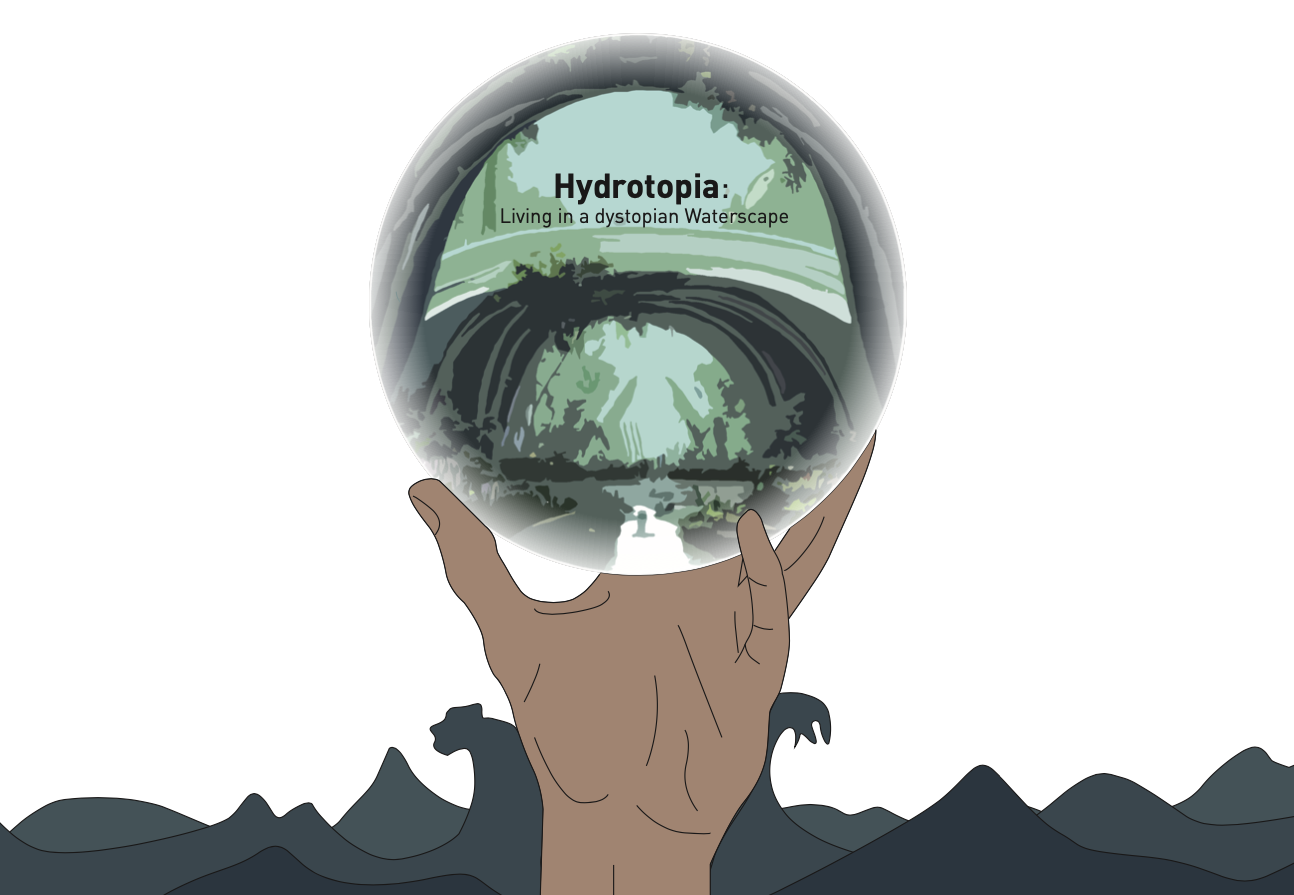
Foteini Katavelaki, Linda Neumer, Stelina Tsalapati, Luuk Verbaal
This project envisions the future of Porto Vecchio in Trieste, considering the impacts of a 7-meter sea level rise and extreme weather conditions. It explores the concept of "bubbles" as protective zones where people can seek shelter amidst the challenges posed by rising sea levels and extreme weather. The project emphasizes the need for adaptation and the recognition of water as a dominant element in the city's waterfront.
Group 3: COMUNITÀ DI TRIESTE. The flow of water
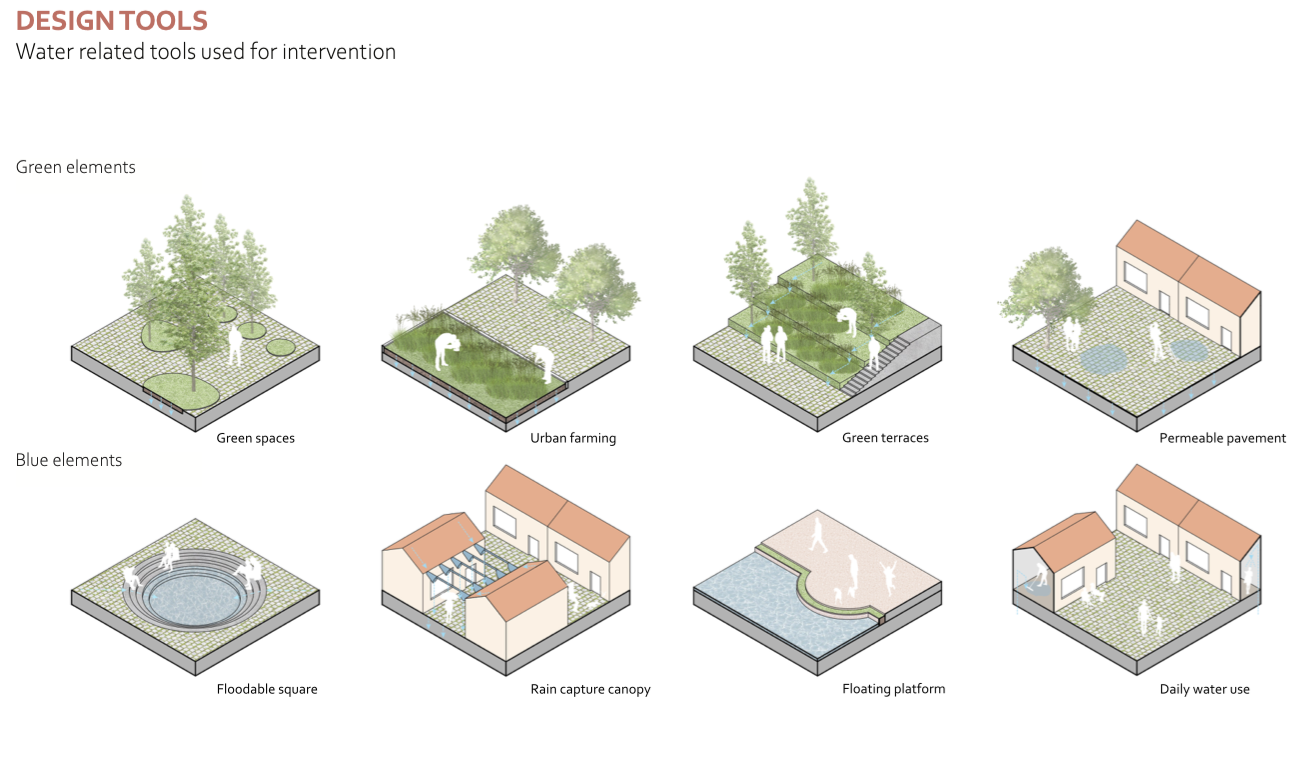
Heime ‘t Hart, Jacky Lai, Ying Shen, Elisabeth Veldkamp, Kjestyn Yee
In our design narrative, we say ‘let that water come in’ and design around it and, more importantly, with it. We want to show that all this water is not a bad thing as long as it is put to good use and managed. This is where the concept of kintsugi comes back to play. The water would take the place of the gold, healing the community by bringing them together.
But then we asked ourselves, what makes a community? That would be a group of people, all with a common believe, goal or any other way of bringing them together. It is our believe that the interaction with water, for a part, can do this. Whether it is playing with, learning about or using this water for growing food, these are all activities which could bring together people. However, we wanted to introduce another layer. While analysing the area, the large amount of water related monuments stood out to us. This gave us the idea to treat other elements as such, like for example coffee and food culture. These are staples of the Italian culture as a whole, which can also be traced back to Trieste. So in our design, we treat coffee and food culture as monuments, both preserving existing and creating new cornerstones for the community. With this layer installed, we set a basis for the design of an architectural intervention.
Group 4: Pressure from below. A geopoetic approach of making space for hidden waters
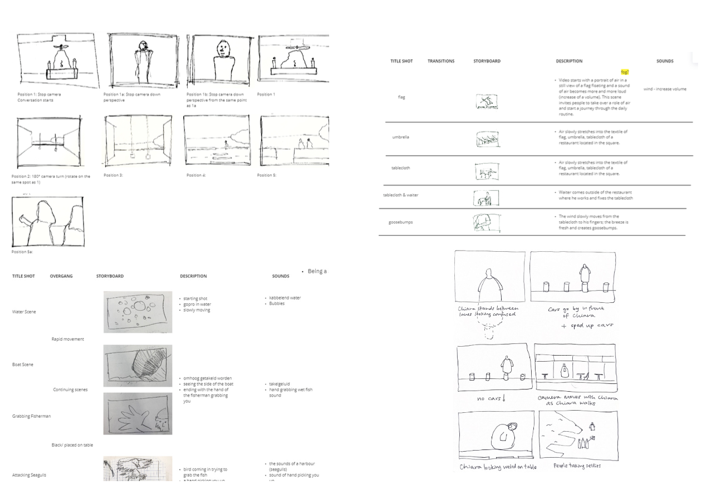
Afra Knaap, Augusta Fiseryte, Fons van de Ven, Niké te Brinke, Paula von Zeska de Toledo, Raf
van Oosterhout, Sue Vern Lai and Winnie van de Sande
Throughout this MSc2 Design Studio we followed a geopoetic approach. The studied site is the city of Trieste, in the North-East of Italy. After our excursion to Trieste and the production of a movie about the Piazza Unità d’Italia, one of the most emblematic sites of the city, we started our research by making two analytical sections. The two cuts ended up as one, by connecting the section lines and creating loop. With it, we gave in to our interest in the complexity of the city of Trieste, due to its layered nature and the intricate presence of water through those layers. We are certain that for this specific design project carried out by this specific group of people, Geopoetics has been the best possible approach. The poem on the previous page describes how Geopoetics functioned as our research method, revealing information otherwise unpacked. This also relates to the role of Geopoetics in academics, formulated by Eric Magrane (2021) among others.
Group 5: Reminders of water
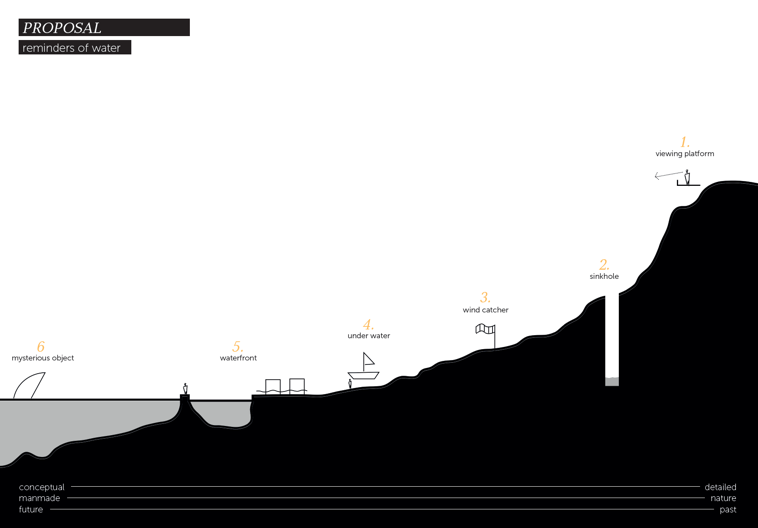
Floriaan Troost, Maartje Frencken, Max Venderbosch, Yingxing Gu
We start on top of the mountain. Here the droplet falls from the rainclouds formed by evaporation above the sea, part of an ancient water system that has been running for 4,5 billion years. We remind the droplet of the Adriatic sea, his final destination for this story. A viewing platform the complete road from the mountain to the sea.
We continue our path downwards. Here in the forest, the water droplet sinks into the ground and is used by trees to grow. To show the importance and level of the groundwater. A huge sinkhole, relating to the nearby Karst landscape, makes the groundwater visible. The sinkhole acts as a selfcooling theatre to emphasize the importance of the theatre culture in Trieste.
Heading towards the city, wind takes up. Locals call it ‘’Bora’’ which means Northwind. It is the prevailing wind in Trieste which brings cold air from the North-East, over the mountains towards the city. The Bora wind is formed by the sea and the mountains and therefore plays a big role in the identity of Trieste. On this spot visitors can see and feel the Bora wind.
Following the droplet into the city it runs through streets, houses and sewage systems. Once upon a time this land was the sea where fisherman sailed. An overhead structure reminds people of this past and creates an underwater experience.
The warehouse district, once an important port were goods could be stored, but with the rise of containerships worldwide, the warehouse district lost its function. Here we want to make a reminder for change. A change in the culture which led the warehouses to be empty nowadays. But also a reminder for climate change and sea level rise, showing the effects of a potential flood.
Finally the water droplet found its way into the sea. Here he first has to go past its next obstacle: A man made wave breaker, which protects the land and the old harbour to high sea waves. Our proposition adds a walkway on the wave breaker for people to enjoy the surrounding of water when the sea is calm. The wave breaker will be connected to the land to make it accessible but also to give the possibility to close it of with high tide. When the droplet finally dissolves in the sea, its future remains unclear. Where will it go? What stories are next? We propose to make a floating unknown object on sea, visible from all of the land, to remind the city of its unknown future. A future connected with the sea. The form language of the object leaves room for interpretation, fantasies, legends and stories to be made up by the people of Trieste. Just as stories about shipwrecks, Russian sailing yachts and heroic sea battles often have a big intangible impact on the identity of a city
